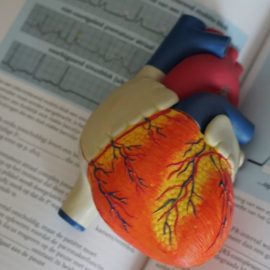

This article is an excerpt from the Shortform guide to "Huberman Lab". Shortform has the world's best summaries and analyses of books, podcasts, and more.
Like this article? Sign up for a free trial here.
Do you sometimes feel energized in the morning but struggle to wind down at night? What if you could get better sleep and sustained energy by leveraging your body’s natural hormone cycles?
According to neuroscientist Andrew Huberman, cortisol gets a bad rap. In an episode of Huberman Lab titled “How to Control Your Cortisol & Overcome Burnout,” he explains how cortisol actually serves as your body’s sophisticated energy management system.
Table of Contents
The Rhythm of Cortisol
According to Andrew Huberman, cortisol is vital for directing glucose and other fuels to tissues requiring the most energy. This corticosteroid hormone serves as your body’s energy management system, distributing glucose to specific areas like your brain when they face heightened energy demands beyond typical stress situations. Derived from cholesterol, cortisol also supports brain function, mental focus, and your natural wake-up process each morning.
Your cortisol follows a predictable 24-hour cycle with four key phases. When you first fall asleep, cortisol levels drop to their lowest point with barely any hormonal activity. As you continue sleeping, the hormone starts climbing slightly before surging rapidly during hours six through eight of sleep. This timing aligns with REM sleep, when your brain becomes highly active and needs glucose from your bloodstream for fuel.
Once you wake up, cortisol activity spikes dramatically, reaching its peak during late morning or around midday before gradually tapering off as the day progresses. Huberman notes that elevated morning cortisol is crucial for maintaining energy, staying alert, and supporting a positive mood. He emphasizes that cortisol should surge when you wake and then decline consistently as evening approaches.
The Hypothalamic-Pituitary-Adrenal (HPA) Axis
The Hypothalamic-Pituitary-Adrenal (HPA) axis governs cortisol’s circadian rhythm through an intricate feedback system. Specialized neurons that produce CRH (Corticotropin-releasing hormone) continuously track cortisol levels in your bloodstream. When your cortisol drops low, CRH triggers the release of ACTH (Adrenocorticotropic hormone) from your pituitary gland, which then prompts your adrenal glands to produce cortisol.
When your morning cortisol levels hit their peak, they reach a critical point that initiates a negative feedback mechanism. This process effectively shuts down cortisol production by sending signals to halt further hormone creation. Should your cortisol climb excessively high, your hypothalamus steps in to suppress additional hormone manufacturing.
Huberman mentions that timing your daily activities and technology use correctly is essential for preserving healthy cortisol patterns, which influence your mood, concentration, alertness, and sleep quality. This relates to how the HPA axis functions, since cortisol’s secretion patterns, circadian timing, and feedback controls all operate as integral parts of this system.
How to Elevate Your Cortisol in the Morning
Cortisol represents a vital hormone with fluctuating levels throughout your day, and optimizing these patterns can boost your health, wellness, and performance. Here are several approaches to elevate your morning cortisol for better energy and alertness.
Huberman emphasizes getting sunlight in your eyes during the first hour after waking, preferably within 30 minutes. This light exposure dramatically increases your cortisol levels, which becomes particularly crucial on cloudy days. If natural sunlight isn’t accessible, a 10,000 lux artificial light serves as an effective alternative until you can get outdoors. Early bright light exposure doesn’t just improve your mood, focus, and alertness—it also promotes lower evening cortisol levels that support quality sleep.
Proper hydration after you wake up is essential, as it boosts alertness and energy while modestly raising cortisol. Consuming 16 to 32 ounces of water, whether plain or with electrolytes, can provide significant benefits. Caffeine can also elevate cortisol, particularly if you’re not a regular caffeine consumer. Even for those accustomed to caffeine who may not experience notable cortisol increases, it can extend cortisol’s beneficial effects. However, Huberman suggests waiting 60 to 90 minutes after waking before having caffeine to prevent a steep cortisol drop later in the day.
Consistent exercise, especially when performed early, can raise your cortisol levels. While familiar workout routines might not produce dramatic spikes, they serve as important signals for your body’s internal clock. You should ideally complete these exercises within the same two to three-hour period daily for optimal consistency. Although evening workouts might elevate cortisol, they won’t interfere with the hormone’s natural decline if you finish them early enough.
How to Lower Your Cortisol in the Evening
To promote better sleep in the evening, you can lower your cortisol levels by using the following strategies.
Eliminate bright artificial light and short-wavelength light from screens to keep your cortisol levels down. Dimming your indoor lighting, particularly two hours after sunset, proves beneficial. Red or amber lighting from incandescent bulbs works well for supporting relaxation. You might also consider phone settings or glasses that block short-wavelength light to help manage your cortisol.
Techniques such as the “physiological sigh”—which involves a double inhale followed by an extended exhale—can rapidly reduce stress and shift your body from a sympathetic to a parasympathetic state that’s ideal for rest. Non-sleep deep rest (NSDR) can also decrease cortisol levels and work best either right after you wake up or if you’re awake during the night.
Cortisol Burnout
Huberman explores burnout’s complexity, challenging the notion that it simply results from exhausted adrenals and highlighting the crucial role of cortisol rhythm management in maintaining overall health and navigating life successfully.
Burnout connects deeply to cortisol dysregulation, and recognizing specific daily cortisol patterns can reveal burnout stages while informing potential treatment approaches.
(Shortform note: Cortisol is a hormone your body releases during stress to help regulate various functions. Dysregulation happens when your cortisol levels become imbalanced, which impacts your energy, mood, and overall well-being. In burnout situations, cortisol dysregulation appears as disrupted daily patterns that affect your sleep, stress levels, and cognitive abilities. Understanding and managing your cortisol rhythms is essential for addressing burnout and promoting your overall health.)
While Huberman doesn’t explicitly reference “phase burnout,” he does identify patterns that align with this concept. One pattern entails people who wake up experiencing intense stress after getting inadequate sleep, suggesting high morning cortisol levels that then plummet during the afternoon. This drop can result in mental fog and memory problems.
The second burnout pattern features morning sluggishness and fatigue, paired with an inability to wind down in the evening, which makes calming your mind for sleep challenging. Huberman describes this energy reversal, observing a pattern where people feel more alert during the afternoon but then struggle with elevated stress levels and sleep difficulties at night.
How to Reduce Burnout From Cortisol Dysregulation
To effectively address burnout, you must restore healthy cortisol rhythm by ensuring elevated morning levels and reduced evening levels, which facilitates sleep and boosts your energy.
For early-stage burnout, Huberman recommends using non-sleep deep rest (NSDR)—which can include yoga nidra—immediately after waking to decrease stress and potentially improve sleep. These practices activate your parasympathetic nervous system and can help adjust how gradually your cortisol rises.
Huberman stresses that excellent nightly sleep is essential and suggests incorporating stress-reduction techniques such as meditation. Engaging in parasympathetic-promoting activities such as long exhale breathing can support sleep—as can taking a warm shower or using a sauna in the evening, followed by a cooler shower to calm your nervous system. Reducing bright light exposure after evening workouts also contributes to proper sleep hygiene.
While Huberman acknowledges that substances such as licorice have powerful effects on cortisol pathways, he warns against immediately turning to supplements for cortisol management. You should prioritize behavioral approaches before trying supplements such as ashwagandha. These supplements work best when integrated into a comprehensive strategy that focuses on lifestyle modifications.

———End of Preview———
Like what you just read? Read the rest of the world's best guides to Huberman Lab" at Shortform.
Here's what you'll find in our full Huberman Lab episode summaries:
- How science can be applied to improve your daily life
- Information about key scientific tools and how they impact society
- How technology, biology, and health are connected






